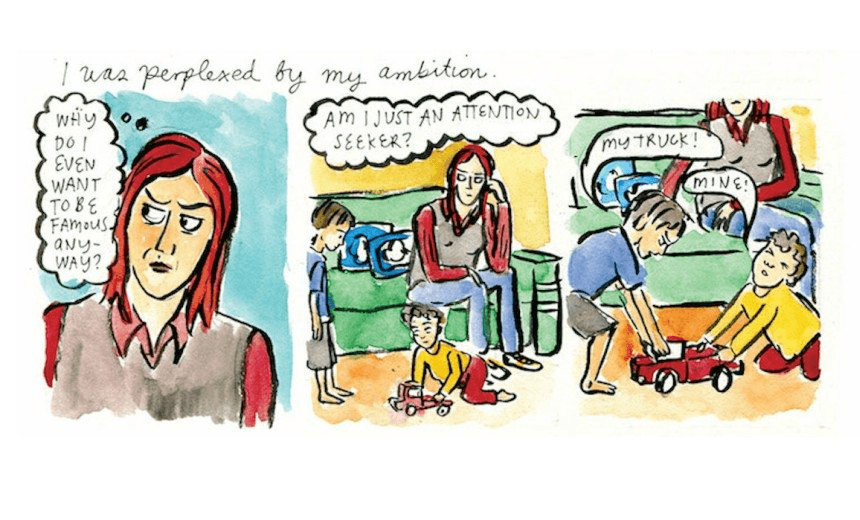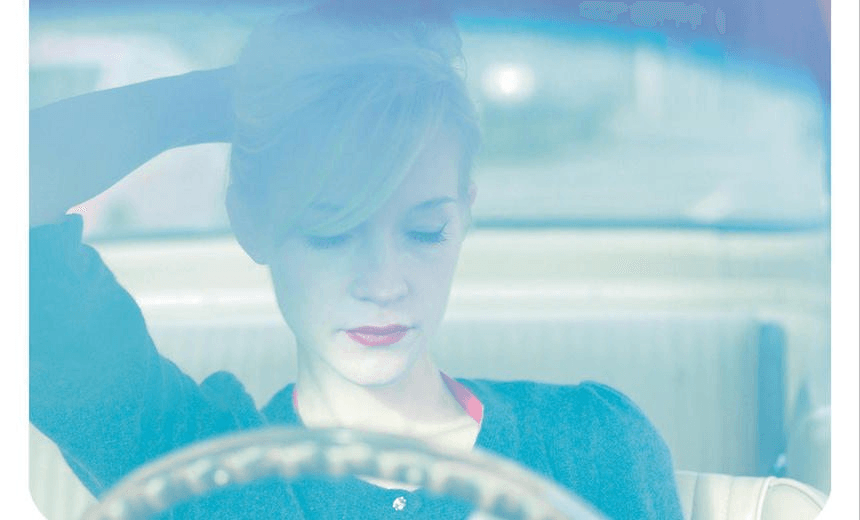All week this week we recommend the very best, A-grade quality, guaranteed good books for Christmas. Today: Melinda Johnston reviews the Sarah Laing book/comic, Mansfield and Me.
Sarah Laing is a novelist, comics artist, blogger and poet with a large and devoted following. From what I’d seen of Laing’s other comics, such as Let Me Be Frank, I was expecting that this too would be a very personal narrative. The book even bills itself as a memoir. But I still wasn’t quite prepared for how very confessional it would feel.
Mansfield and Me is premised on Laing’s search for intersections between her own life and Katherine Mansfield. It progresses through Laing’s life, from young girl dreaming of fame to published writer, finding various points of connection with Mansfield’s story along the way.
It’s divided into 13 chapters, with many titles derived from Mansfield’s short stories and all featuring episodes from Laing’s and Mansfield’s lives. The narratives weave back and forward, drawing out the similarities in their stories. When it works, it’s a very enjoyable way to be introduced to some of the lesser-known aspects of Mansfield’s history, and as someone who always felt like I should be interested in Mansfield’s work—but couldn’t quite muster the level of enthusiasm felt by others—I was grateful for a book that made that history accessible and interesting.
The book’s success is partly due to the way Laing has cleverly varied her source material, using the vast quantity of writing available on and by Mansfield in a range of ways. The first chapter covers the origins of Laing’s obsession with Mansfield as someone spoken about during family holidays at York Bay in Wellington. As Laing floats out into the bay, the story shifts into black and white, taking us to where Mansfield took her own holidays nearly a century earlier.
The shifts between Laing’s and Mansfield’s stories occur in a number of ways. Laing writes about her school ball, before reading one of Mansfield’s stories in English class. The narrative shifts to Mansfield’s time in Switzerland in 1921 (when she wrote that story), then back to Laing writing one of her earliest short stories, “The Ball”, when she felt hopeless for failing to find a partner. Later, she recounts how both she and Mansfield moved to the country, although Mansfield’s rather more explosive experience with DH Lawrence is in deliberate contrast to Laing’s worries of flatmates fighting about bills.
But does the book work as a graphic novel? Laing’s drawing style relies heavily on what David Low called “tabs of identity”; fortunately, her own red hair and Mansfield’s fringed bob make her two main characters easily identifiable throughout. Beyond these tabs, however, I found that her characters’ facial features change from panel to panel, which for me is the pictorial equivalent of giving a character dialogue that doesn’t quite fit.
Throughout, though, Laing works hard to vary her style to match the content. There are nice details like her great great aunt Alison having wobbly speech bubbles, and I enjoyed the linear shift taken during the attacks on Paris. I also liked the use of pages introducing casts of characters, which are undoubtedly helpful for those, like me, who can’t immediately bring the faces of Aldous Huxley or Dora Carrington to mind.
Laing admits in the text how much she loves EM Forster’s A Room with a View. Forster’s famous imperative to “only connect” hangs over Mansfield and Me. The struggle to find a place in the world, to reconcile sexual identity, and to find a working balance between ambition and everyday reality are all successfully realised.
Mansfield and Me: A Graphic Memoir (Victoria University Press, $35) by Sarah Laing is available at Unity Books.






